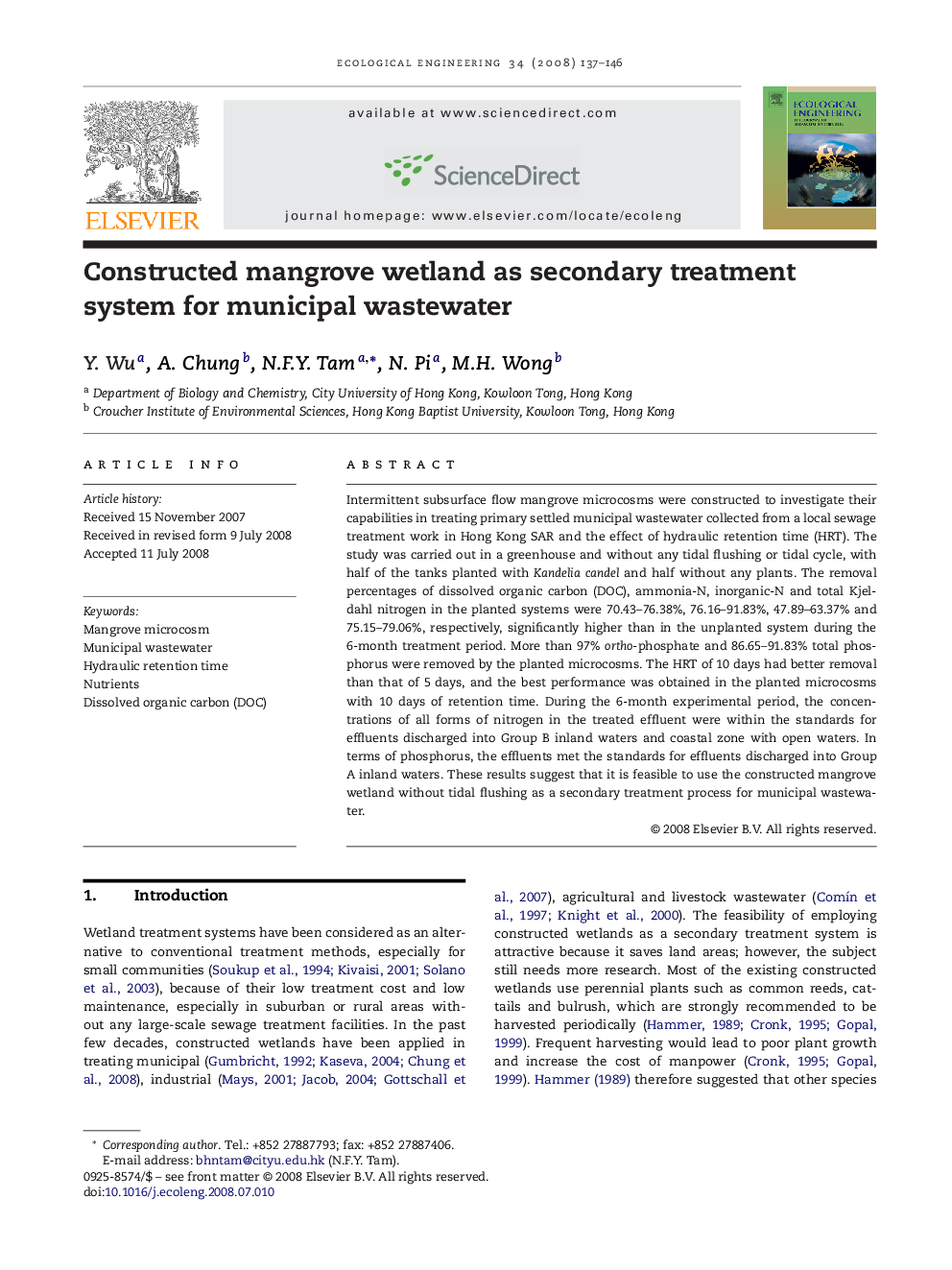| Article ID | Journal | Published Year | Pages | File Type |
|---|---|---|---|---|
| 4390609 | Ecological Engineering | 2008 | 10 Pages |
Intermittent subsurface flow mangrove microcosms were constructed to investigate their capabilities in treating primary settled municipal wastewater collected from a local sewage treatment work in Hong Kong SAR and the effect of hydraulic retention time (HRT). The study was carried out in a greenhouse and without any tidal flushing or tidal cycle, with half of the tanks planted with Kandelia candel and half without any plants. The removal percentages of dissolved organic carbon (DOC), ammonia-N, inorganic-N and total Kjeldahl nitrogen in the planted systems were 70.43–76.38%, 76.16–91.83%, 47.89–63.37% and 75.15–79.06%, respectively, significantly higher than in the unplanted system during the 6-month treatment period. More than 97% ortho-phosphate and 86.65–91.83% total phosphorus were removed by the planted microcosms. The HRT of 10 days had better removal than that of 5 days, and the best performance was obtained in the planted microcosms with 10 days of retention time. During the 6-month experimental period, the concentrations of all forms of nitrogen in the treated effluent were within the standards for effluents discharged into Group B inland waters and coastal zone with open waters. In terms of phosphorus, the effluents met the standards for effluents discharged into Group A inland waters. These results suggest that it is feasible to use the constructed mangrove wetland without tidal flushing as a secondary treatment process for municipal wastewater.
